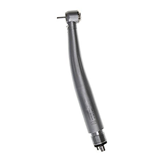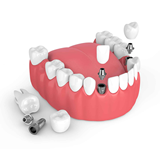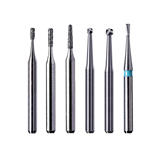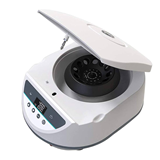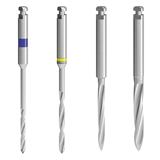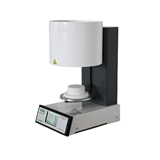The maintenance and longevity of dental chairs are crucial aspects for dental practices seeking to maximize their investment and provide high-quality care to patients. Proper maintenance ensures that dental chairs remain in optimal working condition, while ensuring their longevity extends the lifespan of these essential pieces of dental equipment. Let's delve into the key considerations for maintaining dental chairs and promoting their longevity.
Establishing a Routine Dental Chair Maintenance Plan:
A well-structured and consistent maintenance plan is essential for preserving the functionality, hygiene, and longevity of dental chairs. By implementing a routine maintenance plan, dental practices can ensure that their equipment remains in optimal condition, reducing the risk of downtime, costly repairs, and potential disruptions to patient care. Here's a step-by-step guide to establishing a comprehensive dental chair maintenance plan:
Step 1: Review Manufacturer Guidelines
Begin by thoroughly reviewing the manufacturer's guidelines and recommendations for maintaining the dental chairs. The manufacturer's manual will provide specific instructions on cleaning procedures, lubrication, calibration, and servicing intervals. Understanding and adhering to these guidelines are crucial for effective maintenance and to preserve any warranty agreements.
Step 2: Create a Maintenance Schedule
Develop a detailed maintenance schedule outlining the specific tasks, frequencies, and responsible parties. Divide the maintenance tasks into daily, weekly, monthly, and yearly categories. Daily tasks may include surface cleaning and disinfection, while weekly tasks may involve checking hydraulic systems and electric components. Monthly and yearly tasks could include more in-depth inspections and servicing by qualified technicians.
Step 3: Assign Responsibilities
Assign clear responsibilities to specific dental team members for different maintenance tasks. Clearly outline who is responsible for daily cleaning and disinfection, who is in charge of checking equipment functionalities weekly, and who will coordinate with external technicians for regular servicing. Creating a well-defined structure ensures accountability and a more efficient maintenance process.
Step 4: Training and Education
Ensure that all dental staff members are trained on the proper maintenance protocols and procedures. Offer training sessions or workshops to educate the team on the correct usage, cleaning techniques, and troubleshooting tips. Knowledgeable staff members are better equipped to identify potential issues and address them promptly.
Step 5: Documentation and Record-Keeping
Maintain a comprehensive record of all maintenance activities. Keep track of each cleaning, servicing, or repair session, including the date, task performed, and any relevant notes or observations. This documentation helps monitor the equipment's performance over time, aids in identifying recurring issues, and provides valuable information during audits or inspections.
Step 6: Regular Inspections
Perform regular visual inspections of the dental chairs to identify any visible signs of wear, damage, or malfunction. Encourage dental staff to report any concerns or abnormalities promptly. Timely identification of potential issues allows for proactive maintenance and prevents minor problems from escalating into major repairs.
Step 7: Partnering with Qualified Technicians
Establish a partnership with qualified technicians or authorized service providers for more complex maintenance and servicing needs. Regularly schedule professional inspections and servicing to ensure that dental chairs are thoroughly examined and maintained according to manufacturer standards.
Step 8: Updating and Reviewing the Plan
Periodically review and update the maintenance plan based on changing equipment needs, staff feedback, or any technological advancements in dental chair maintenance. Flexibility is essential in adapting the plan to evolving requirements and optimizing its effectiveness.
Addressing Common Dental Chair Issues and Repairs:
Dental chairs are sophisticated pieces of equipment that undergo extensive use in dental practices. Over time, they may encounter various issues that can affect their functionality and patient comfort. Promptly addressing common dental chair issues and performing necessary repairs is crucial for maintaining a smooth and efficient dental practice. Here are some common dental chair issues and steps to address them:
1. Stuck or Unresponsive Chair Movements
Issue: The dental chair may get stuck in certain positions or become unresponsive to control commands, hindering the dental team's ability to adjust the chair's position during treatments.
Possible Causes: This issue could be due to hydraulic system malfunctions, damaged control switches, or electrical problems.
Steps to Address:
- Check the hydraulic fluid level and refill if necessary, following the manufacturer's guidelines.
- Inspect the control panel and switches for any visible damage or loose connections. Tighten or replace as needed.
- If the issue persists, contact a qualified dental equipment technician to diagnose and repair any electrical or hydraulic system problems.
2. Squeaky or Noisy Movements
Issue: The dental chair may produce squeaking or other abnormal noises during adjustments, causing discomfort to patients and distracting the dental team.
Possible Causes: Squeaky movements can result from dry or worn-out lubrication, loose components, or damaged bearings.
Steps to Address:
- Lubricate the moving parts of the chair, such as hinges, pivots, and joints, using a suitable lubricant as recommended by the manufacturer.
- Tighten any loose screws or bolts that may be contributing to the noise.
- If the noise persists, inspect the bearings and other mechanical components for signs of wear and replace them if necessary.
3. Torn or Worn Upholstery
Issue: The chair's upholstery may become torn, worn, or stained over time, compromising patient comfort and the appearance of the dental operatory.
Possible Causes: Normal wear and tear, exposure to chemical disinfectants, or improper maintenance can lead to damaged upholstery.
Steps to Address:
- Regularly clean and disinfect the upholstery using manufacturer-approved cleaning agents to prevent stains and deterioration.
- Consider using protective covers or disposable barriers during procedures to minimize direct contact with the upholstery.
- If the upholstery is severely damaged, consult the manufacturer or a reputable upholstery service to replace the affected parts.
4. Faulty Foot Control Pedals
Issue: The foot control pedals that operate the chair may become unresponsive or intermittently malfunction, affecting the chair's adjustability.
Possible Causes: Dust or debris accumulation, loose connections, or worn-out foot pedals may lead to this issue.
Steps to Address:
- Clean the foot control pedals thoroughly, removing any debris or dust that may obstruct proper functioning.
- Check the pedal's electrical connections for tightness and secure any loose wires or connections.
- If the issue persists, consider replacing the foot control pedals or seeking professional assistance for electrical repairs.
5. Non-Functional Digital Controls
Issue: The digital touch-screen controls or other electronic interfaces may experience glitches or become unresponsive, limiting the chair's adjustability and data display capabilities.
Possible Causes: Software malfunctions, calibration issues, or physical damage to the touch-screen may cause this problem.
Steps to Address:
- Restart the chair's system and perform a calibration, following the manufacturer's instructions.
- Check for any visible damage to the touch-screen or electronic components, and replace if necessary.
- If the issue persists, contact the manufacturer's technical support or a qualified technician to diagnose and resolve the problem.
Sourcing Quality Replacement Parts and Accessories
Sourcing quality replacement parts and accessories for dental chairs and equipment is crucial for maintaining the functionality, safety, and longevity of these essential tools in dental practices. Whether it's replacing worn-out components or upgrading to newer accessories, finding reputable suppliers is key to ensuring that the dental equipment operates at its best. Here's a guide on how to source quality replacement parts and accessories:
1. Contact the Manufacturer
Reach out to the original manufacturer of the dental chair or equipment to inquire about replacement parts and compatible accessories. Manufacturers often have official distribution channels or authorized dealers that supply genuine parts and accessories. Buying directly from the manufacturer or their authorized sources ensures the authenticity and quality of the products.
2. Authorized Distributors and Suppliers
If purchasing directly from the manufacturer is not feasible, look for authorized distributors or suppliers recommended by the manufacturer. Authorized distributors typically have a partnership with the manufacturer and can provide genuine replacement parts and accessories that meet the required specifications.
3. Online Retailers and Marketplaces
Reputable online retailers and marketplaces specializing in dental equipment and supplies can be a valuable resource for sourcing replacement parts and accessories. Look for sellers with positive reviews and high ratings to ensure their credibility. Be cautious of extremely low prices, as they may indicate counterfeit or substandard products.
4. Dental Equipment Service Companies
Dental equipment service companies or technicians may also offer replacement parts and accessories for various dental chair brands. These professionals often have access to genuine parts and can provide advice on selecting the right components for specific equipment models.
5. Trade Shows and Dental Conferences
Attending dental trade shows and conferences can provide an opportunity to connect with reputable suppliers and manufacturers directly. Many exhibitors showcase their latest products, including replacement parts and accessories. Engaging with representatives at these events can offer valuable insights and build relationships with reliable suppliers.
6. Check for Certifications and Quality Assurance
Ensure that the replacement parts and accessories meet industry standards and certifications. Look for marks like ISO certification, CE marking, or FDA approval, as these indicate compliance with international quality and safety requirements.
Extending the Lifespan of Dental Chairs through Careful Use:
Dental chairs are significant investments in dental practices, and maximizing their lifespan is essential to ensure long-term cost-effectiveness and efficiency. Careful use and proper maintenance are key factors in extending the lifespan of dental chairs. Here are essential tips on how to achieve this:
1. Educate Dental Staff
Properly educate dental staff on the correct operation and handling of dental chairs. Training them on the chair's features, control panels, and adjustment mechanisms helps prevent misuse and potential damage.
2. Weight Capacity Awareness
Be mindful of the dental chair's weight capacity and educate both staff and patients about it. Avoid exceeding the chair's weight limit to prevent undue stress on the chair's components.
3. Use Disposable Barriers
Utilize disposable barriers on chair surfaces, headrests, and armrests during patient treatments. These barriers protect the chair from contaminants, minimize wear and tear, and ease the cleaning process.
4. Proper Cleaning and Disinfection
Follow the manufacturer's guidelines for cleaning and disinfecting the dental chair after each patient treatment. Using recommended cleaning agents and techniques prevents damage to chair materials and ensures a hygienic environment.
5. Avoid Sharp Instruments on Upholstery
Refrain from using sharp instruments near the chair's upholstery to prevent accidental tears or punctures. Handle instruments with care to avoid unintentional damage.
6. Lubrication and Maintenance
Regularly lubricate chair mechanisms according to the manufacturer's recommendations. Implement a maintenance schedule and promptly address any mechanical issues to prevent further damage.
7. Limit Chair Movement Speed
Encourage staff to operate the chair's movement controls at moderate speeds. Abrupt or excessive movements can strain hydraulic systems and lead to premature wear.
8. Proper Patient Positioning
Guide patients gently into position and avoid sudden movements that could stress chair components or cause discomfort.
9. Avoid Overloading Chair Trays
Ensure that chair trays are not overloaded with heavy instruments or materials. Distribute weight evenly to prevent strain on the chair's support structure.
In conclusion, the maintenance and longevity of dental chairs play a vital role in the efficient functioning of dental practices and ensuring the comfort and safety of patients. Establishing a well-structured maintenance plan, adhering to manufacturer guidelines, and assigning clear responsibilities to dental team members are essential steps to preserve the functionality and hygiene of dental chairs. Regular inspections, timely repairs, and partnering with qualified technicians are crucial in addressing common dental chair issues and ensuring prompt resolution. Additionally, sourcing quality replacement parts and accessories from reputable suppliers helps maintain the optimal performance of dental equipment.



